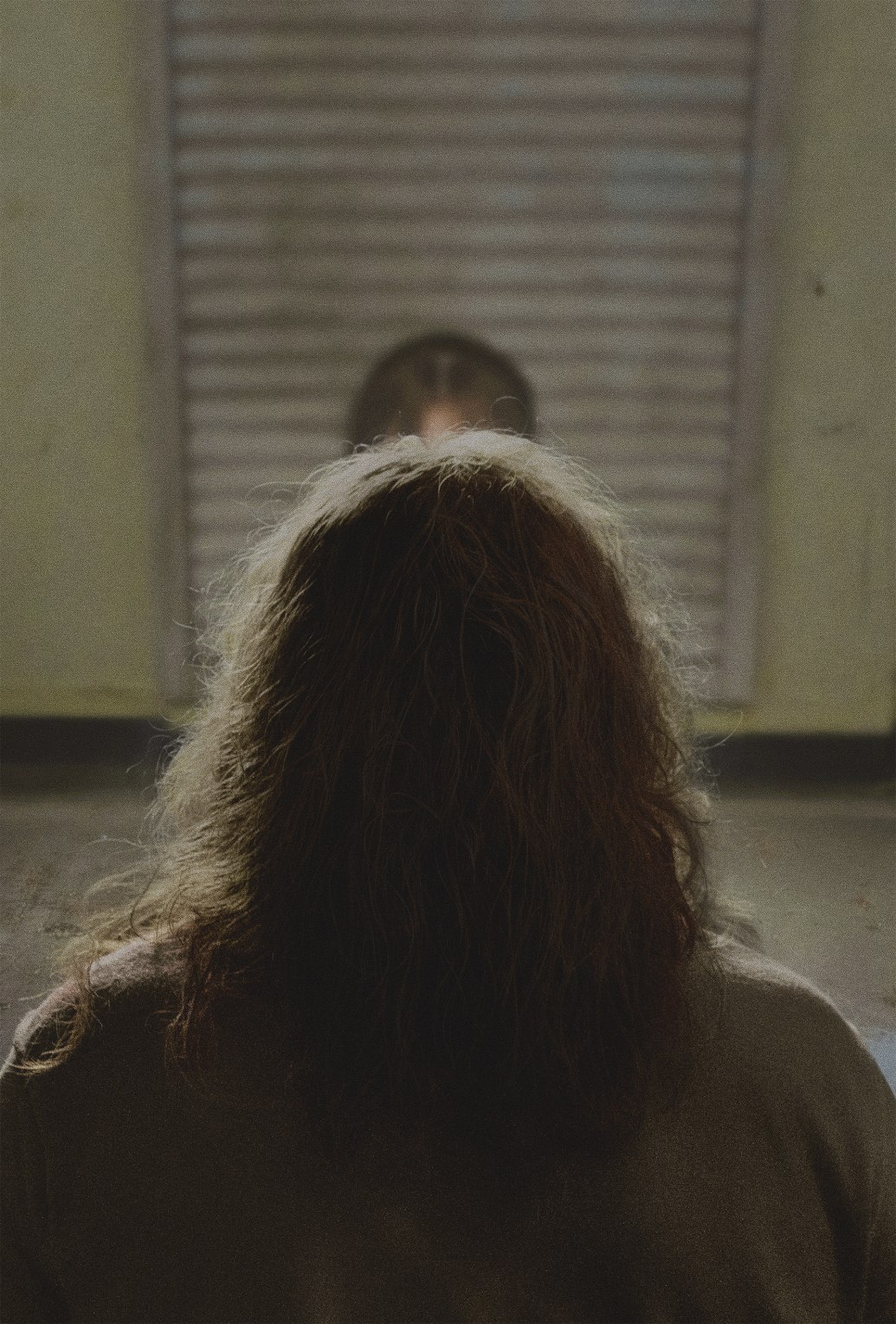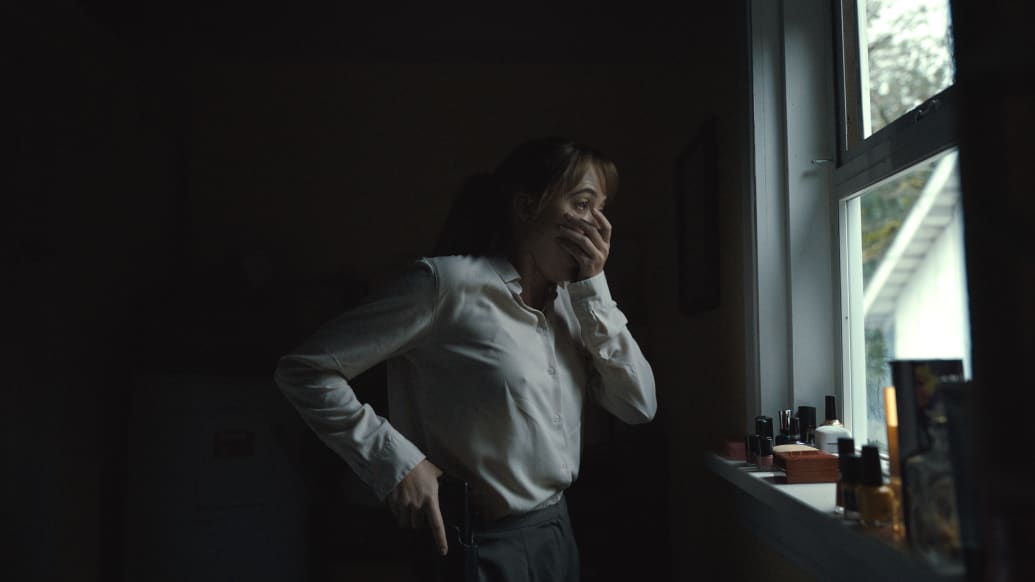Osgood Perkins (The girl in the black coat, Gretel and Hansel) locates the horror in impious irrationality, and Long legs is a serial killer thriller filtered through a nightmarish mix of personal and cinematic memories. Thesilenceofthelambs, Red Dragon, Zodiac, SevenAnd Psycho— the last film to star Perkins’ father, Anthony — this saga of Satanic secrets and doting moms vibrates, from its chilling opening to its deviant finale, with a wicked, twisted malevolence.
Firmly establishing the writer/director as a genre craftsman with few equals, it’s a thriller that gets dirtier and scarier with every step toward damnation, while also providing an unforgettable showcase for Nicolas Cage as a zealous maniac like no other.
(Warning: Some spoilers ahead.)
In 1974, a young girl is coloring at her bedroom desk. Through the window, she sees a station wagon parked at the end of the driveway leading to her isolated rural home. Donning a winter coat and scarf, she investigates and notices the silhouette of a person in the passenger seat.
Startled by a voice behind her, she turns and crosses the courtyard, where she encounters a figure in white jeans, a matching denim jacket, long silver hair, and a seemingly deformed face whose lower half is all Perkins reveals. This man says something about the girl’s birthday and the fact that she wears long legs, then leans over and screams in a fit of psychotic hysteria as startling as the immediate appearance of the film’s credits.
Long legs I won’t contextualize this prologue until much later, as it quickly takes place in Oregon in the 1990s, with FBI Special Agent Lee Harker (He followsm“Maika Monroe and her colleagues are ordered to go out into the field to knock on doors in search of a wanted criminal. In a cluster of ready-made houses, Lee stares at the rooftops and sky as if in a daze, and the word “Visitor” spray-painted on the entrance to an alley marks her as an intruder in her target’s battlefield.

Nicolas Cage as Longlegs.
NEON
This impression is amplified when a “hunch” guides her to the location they are looking for. Following this episode, Harker is given a picture-word association test by her superiors – which also involves guessing computer-generated random numbers – which identifies her as a semi-psychic capable of intuiting things to a greater degree than her colleagues.
With this skill, Harker’s boss Agent Carter (Blair Underwood) recruits her to investigate a series of murder-suicides committed over the past thirty years by fathers against their wives, children and themselves. In each case, including the most recent, the murders take place on the 14th of a given month, which is the birthday of the clan’s daughters, and a note is left at the crime scene, written in numbers except for her signature: Longlegs.
Despite these letters, there is no sign of a break-in or physical evidence of another attacker, so Harker deduces that this may be a quasi-Charles Manson convincing his victims to commit the act.
This seems far-fetched to Carter, and Harker’s own assumptions are quickly challenged when, one night in his Pacific Northwest log cabin (shades of Twin Peaks), she is visited by Longlegs, who leaves her a birthday card containing a key to her written code.
Ominous whispers in the wind hint at potential danger, and schizoid visions of snakes suggest evil forces are at play, and Perkins complements these devices with serpentine camerawork and expansive widescreen compositions that isolate her protagonist within the frame. Monroe plays Harker as a perpetually distant and icy woman, and her detachment from her surroundings and her fellow human beings—like Carter’s young daughter, Ruby (Ava Kelders), to whose birthday party she’s invited—reinforces the sense that an illogical, unstoppable evil lurks just around the corner.

Maika Monroe in Long legs.
NEON
Long legs The novel adopts a procedural stance, but its mysteries are more secular and its destination more insane than its earlier intimates. Harker’s investigations reveal archaic symbols and calendar motifs that, taken together, point to a ritualistic satanic ugliness, in sharp contrast to the reminders of Harker’s mother, Ruth (Alicia Witt), to pray consistently.
From their second phone call, it’s clear that something is wrong with Ruth, and a trip to the house—whose interior is cluttered with piles of household detritus—reinforces that notion. Yet Harker has more pressing matters than her relative, like a strange conversation with the lone survivor of Longlegs (Kiernan Shipka) and an earlier visit to the girl’s farm, where she and Carter discover a buried doll with one of the killer’s iconic missives.
The more Harker discovers, the less she understands, and Long legs plays an equally clever game, introducing a variety of familiar elements and then twisting them into something strange and incomprehensible. Nothing makes sense in the best possible way, with Perkins disconcerting in his opacity. Things don’t become lucid even once Harker and Carter get their hands on Longlegs and sit him down for an interview under the glaring fluorescent lights of an interrogation room.
Merging the fragmentary madness (and trifurcated structure) of The girl in the black coat with the wickedness of the fairy tale Gretel and Hanselthe director embraces the darkness, which, ultimately, is where Longlegs claims his partner, “Mr. Downstairs,” resides.
Perkins cleverly implies more than he explains, and that’s doubly true of Cage’s performance as the title character, whose face is hidden from view for the first half of the film and resembles an apparent mask that seems designed to conceal a truly indescribable and unfathomable reality.
Whether he’s belting out a recognizable ditty, sitting silently in his dingy studio, or praising his grandmaster of deception, Longlegs is less a child of this Earth than a malevolent creature of myth, and Cage strikes an ideally deranged chord as the specter, whose motivations and machinations remain frighteningly difficult to decipher. Equally indebted to the work of Conrad Veidt, Bela Lugosi, and Ted Levine, yet adorned with a delirium all its own, it’s a terrifying tour de force.
Long legs“The final revelations present the story as one of maternal sacrifice and sin, and the fine line between selflessness and monstrosity. It argues that to protect often means to destroy, and that even in the best of circumstances, doing either results in ruin.